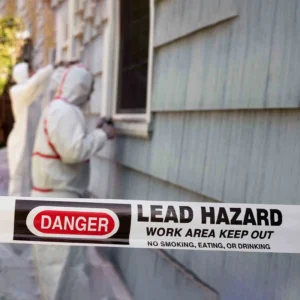Consumer Reports, a nonprofit organization dedicated to consumer safety, released findings indicating elevated levels of lead in cinnamon powder and multi-spice powders from 12 different brands across New York, New Jersey and Connecticut. This testing, made public on Thursday (September 12, 2024), underscores potential health concerns associated with these popular kitchen staples.
The highest levels of lead were found in products from Paras and EGN, with Paras’ cinnamon powder topping the list at 3.52 parts per million (ppm). Other brands, such as Mimi’s Products, ShopRite Bowl & Basket, and several others, also showed notable levels above 1 ppm, prompting some companies to halt sales and initiate product removal from shelves, as confirmed by statements to Consumer Reports.
In response to the findings, various brands provided statements, each affirming their commitment to safety and compliance with existing regulations. For instance, Mimi’s Products emphasized their reliance on vendor-provided reports indicating compliance with lead safety thresholds, while Wakefern Food Corp., owner of ShopRite Bowl & Basket, stressed adherence to rigorous quality standards.
However, it’s crucial to note that lead, even in trace amounts, poses health risks, particularly for children, according to the US Environmental Protection Agency (EPA). The EPA warns that lead accumulates in the body over time and can lead to serious health issues, affecting the nervous system and potentially causing learning disabilities and other developmental problems.
The World Health Organization (WHO) has similarly highlighted the global impact of lead exposure, attributing significant health burdens and even fatalities to its long-term effects. Lead exposure, especially at high levels, can result in severe neurological damage and is particularly harmful to young children.
Despite these concerns, regulatory oversight varies. While New York State mandates recalls for spice products exceeding 1 ppm of lead, there are no federal mandates governing lead levels in spices. The FDA, for instance, has not established formal regulations but has issued alerts and recommends caution regarding products exceeding certain thresholds.
Consumer Reports’ testing also revealed varying lead levels across different brands, with some products testing below 1 ppm. This variance underscores the importance of ongoing vigilance and monitoring within the industry to ensure consumer safety.
Dr. Pieter Cohen, an expert in consumer product safety, highlighted the lack of stringent oversight, noting that regulatory gaps allow manufacturers to determine acceptable levels of lead in their products. He emphasized the need for increased regulatory measures to protect consumers from potentially harmful exposures.
In response to inquiries, the FDA acknowledged the issue and recommended that consumers dispose of specific products flagged in recent alerts. The agency clarified that ongoing monitoring does not currently indicate broader safety concerns with ground cinnamon products on the market.
Looking forward, proposed changes under the Biden administration’s budget could enhance FDA oversight by mandating industry testing and record-keeping for contaminants in food products. This initiative aims to bolster consumer protection and ensure compliance across the food industry.
As this issue unfolds, Consumer Reports urges consumers to stay informed and take proactive steps to mitigate risks associated with lead exposure in food products. The organization’s findings serve as a starting point for broader discussions on improving safety standards and regulatory practices within the spice industry.





